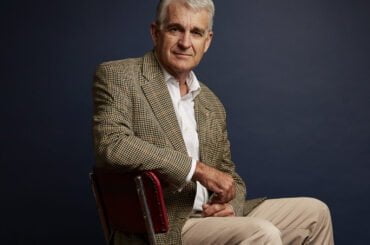In Context
In 2014 Australian writer Bruce Pascoe published Dark Emu, which purported to be a radical revision of our understanding of Aboriginal culture. Pascoe claimed that Indigenous Australians, contrary to general opinion, practised widespread farming, lived in villages made up of thousands, lived in permanent stone dwellings, and generally used familiar agricultural tools. Pascoe also said that this information had either been missed or ignored by other anthropologists and scholars.
Dark Emu went on to win numerous literary awards, become a part of school curricula, and was heavily promoted by the Australian Broadcasting Commission. Few history books have been as widely read and promoted as Dark Emu. It was a publishing sensation. And yet much of Dark Emu is simply incorrect and wildly misleading.
Distinguished scholars, Peter Sutton and Keryn Walshe show that everything Pascoe gets right has been said before by other scholars, and everything that is original in his book is either wrong or devoid of evidence to substantiate. Perhaps most troubling is Dark Emu’s tendency to describe Indigenous culture as primitive unless it resembles modern Western civilisation. Thus, in his misguided and misleading efforts to generate appreciation for Aboriginal culture, Pascoe actually perpetuates the old social evolutionist myths that did so much to lower people’s esteem for Indigenous Australians in the first place.
Big Ideas
- Indigenous Australians were neither purely nomadic nor mainly sedentary (as Pascoe claims), but were best described as semi-nomadic
- There is no evidence that Indigenous Australians practised widespread farming, nor did they want to
- Pascoe always grossly exaggerates the evidence supporting his views that Indigenous Australians practised farming methods, were sedentary, and lived in large villages, and ignores the mass of evidence to the contrary
- Pascoe completely ignores the spiritual reasons as to why Indigenous Australians lived as they did, and thus fails to understand that they consciously lived as they did, not out of ignorance, but to keep to their own laws and beliefs about the land
- Pascoe perpetuates the idea that Aboriginal culture was primitive and inferior to European culture
Were Indigenous Australians farmers and gardeners?
One of Pascoe’s major claims is that Indigenous Australians practised agriculture (farming) and horticulture (gardening), central to which is planting seeds. According to Pascoe, Indigenous Australians were farmers and gardeners before white people arrived. Sutton and Walshe consult all the secondary literature and find that there is no evidence to support Pascoe’s claim, and an abundance of evidence to the contrary. Pascoe deliberately omits caveats in the literature that warn that findings are tentative and merely possible in order to create the impression that the evidence for agriculture is certain. [89] He also ignores the literature that convincingly argues to the contrary of his views.
Pascoe also exaggerates the extent to which Aborigines ground up seeds by misrepresenting a well known map of seed-grinding regions in Australia and massively inflating the highlighted zone of the original map. [76] Pascoe also misleads readers to think that Aboriginal Australians commonly used a particular kind of fish trap, when in fact the trap he refers to was unique and exceptional and definitely not representative of the usual kinds. As usual, he also writes as though the trap in question is largely unknown to the experts, even though the experts have been discussing it since the 1930s. [101-3]
According to Sutton and Welshe, Pascoe embarks on “an almost desperate search to find something to back up the belief that the Old People sowed seeds for crops and were thus agricultural people,” but offers nothing. [91] Importantly, “Pascoe does not appear to have ever probed the agriculture or gardening issue with senior and knowledgeable Aboriginal people who grew up living off the land, or whose older family members did.” As well as this, Pascoe “only occasionally [quotes] the reports of those who have carried out in-depth research on Aboriginal traditions with living Aboriginal people.” [61]
Furthermore, what Pascoe doesn’t appreciate is that Aboriginal Australians knew full well that planting seeds and tubers generated fruit and vegetables, but their traditional ways did not permit it: “It was cultural resistance, and loyalty to their own ways” that dissuaded them from farming, not ignorance [91]
How nomadic were Indigenous Australians?
Pascoe claims “permanent housing was a feature of the pre-contact Aboriginal economy and marked the movement towards agricultural reliance.” [105] Pascoe’s claim is that Aboriginal Australians were sedentary – not nomadic – and that they lived in permanent dwellings in often large villages of up to 10,000. This is quite a departure from the scholarly consensus. Typically, however, to buttress this claim Pascoe provides “only fragmentary evidence from a single part of Victoria”. [105] In fact, Aboriginal life is best described as semi-sedentary or semi-nomadic, as Aborigines did stay for periods of time – several weeks, or several months, or sometimes up to a year – in a single location, but never stayed permanently. Testimony of anthropologists and colonials who lived in Indigenous communities and wrote accounts of their ways shows their campsites would usually be made up of dozens of people, sometimes up to 200, but not the kinds of numbers Pascoe claims.
It is true that stone structures have been discovered in which Indigenous people inhabited for lengths of time. What is also clear is that the best evidence demonstrates “use of stone was the exception rather than the rule”. [109] In keeping with his general methodology, Pascoe highlights the rare stone structures that have been found and, assiduously avoiding all the contrary evidence, gives the impression that such structures were common in Aboriginal societies. [110] They were not. And they were not used as permanent dwellings. Typical also is Pascoe’s tendency to use elusive and misleading footnotes to create an air of scholarly support. But there is none.
Pascoe’s claims relating to the tools Aborigines used, as well as cooking practices also don’t stand up to even the mildest scrutiny. He claims that Indigenous Australians smoked eels in the thousands by using trees as smokers and ovens. There is almost no evidence to support this. [195] Again, through misquotation of sources and exaggeration and speculation Pascoe says that Indigenous people commonly used agricultural equipment and other tools for which there is little to no evidence. [156-175]
Commentary
Perhaps most concerning to Sutton and Walshe is Pascoe’s underlying assumption that received scholarly opinion of Indigenous tribal practices shows Aboriginal culture to be primitive and lacking in complexity. Sutton and Walshe see this as a horrible throwback to evolutionary views of Indigenous society that place it at a primitive end of a spectrum, far removed from “civilisation”. Sutton and Walshe argue, contra Pascoe, that Indigenous Australians lived the way they did, not out of ignorance – as though they didn’t know that vegetables and fruits could be planted with seeds – but in fidelity with their spirituality and their understanding of the earth as something that is not to be mastered and manipulated, but to be respected and, as much as possible, left as it is. Sutton and Walshe thus speak of “dedicated, long-term and resilient conservation of eco- systems by Aboriginal hunter-gatherers for thousands of years….This is why Australia was in such good shape when Europeans arrived.” [175]
Sutton and Walshe record many instances of Bruce Pascoe using very selective quotations from colonial explorers’ accounts to support his theses, as well as claims that authors and explorers said things they never actually said. In short, Pascoe’s use of other sources is often completely misleading and he argues for the exact opposite of what his sources say. [146-55] Farmers or Hunter-Gatherers? is a forensic exposé of a publishing sensation that has had a huge impact on the education of Australian children and the general reading public, but which never should have. As Sutton and Walshe show, the truth about pre-colonial Indigenous Australia is far more interesting, and far more ennobling.




